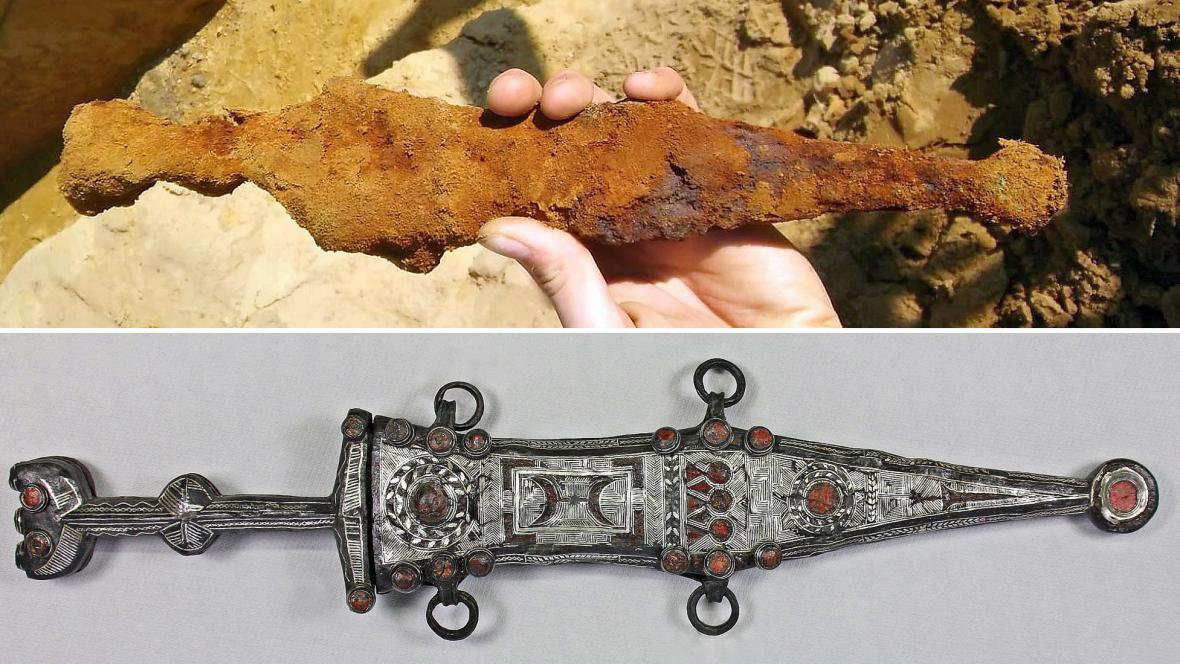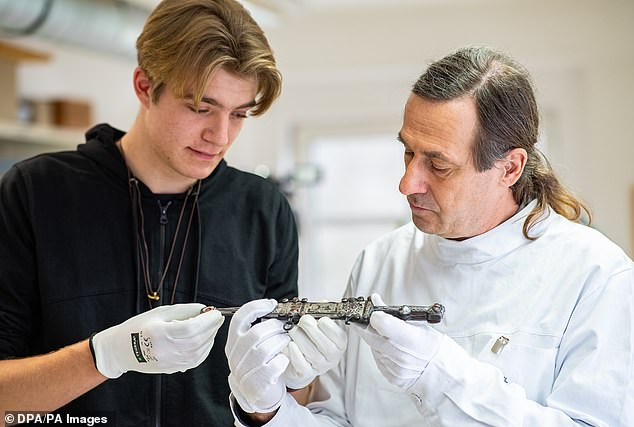An elaborate silver Roman dagger has been painstakingly restored to its original glory after it was unearthed by a teenager on work experience in Germany.
Nico Calman, 19, found the fascinating weapon - believed to be the most remarkable artefact of its kind to have been discovered - at a burial ground in Haltern am See, near Münster.
It is so well preserved that red enamel and glass, as well as silver and brass handles decorated with ornate patterns of foliage and leaves survived for 2,000 years.
The dagger is believed to have been used by a legionary fighting a Germanic tribe in the 1st century, according to The Times.
When the weapon was pulled from the ground, it was completely encased in rust before being restored over the span of nine months to reveal its previous state.
When the weapon was dug from the ground, it was completely encased in rust before being restored over the span of nine months to reveal its previous state
It measures as long as a forearm and even features 'blood channels' on the blade - grooves said to reduce suction when it is removed from flesh.
Unearthed along with the fascinating decorated dagger were bronze and brass plates, the remnants of a leather belt and a lime-wood sheath and flaxen twine.
The ornate dagger is beeing displayed in Haltern's Roman history museum.
Michael Rind, director of archaeology at the local Westphalia-Lippe council, told The Times: 'This combination of a completely preserved blade, sheath and belt, together with the important information about precisely where they were found, is without parallel.'
Nico Calman (pictured), 19, dug up the fascinating weapon - believed to be the most remarkable artefact of its kind to have been discovered - at a burial ground in Haltern am See, near Münster
Roman soldiers are said to have carried ornate daggers as a sign of prestige - and Haltern was a large military camp established by troops, according to local media.
Despite archaeological excavations taking place in the Germany district for 200 years, this discovery is bound to shed new light into Roman activities east of the Rhine.
It was thought that the camp had been abandoned following a severe defeat as up to 20,000 men were wiped out.
In the 1990s, a new burial ground not far from the site of the battle was discovered - with several graves were discovered, including 25 skeletons in a pottery furnace.
Through the restoration, the dagger was finally pulled out of its sheath. (Photo: LWL / Eugen Müsch)










